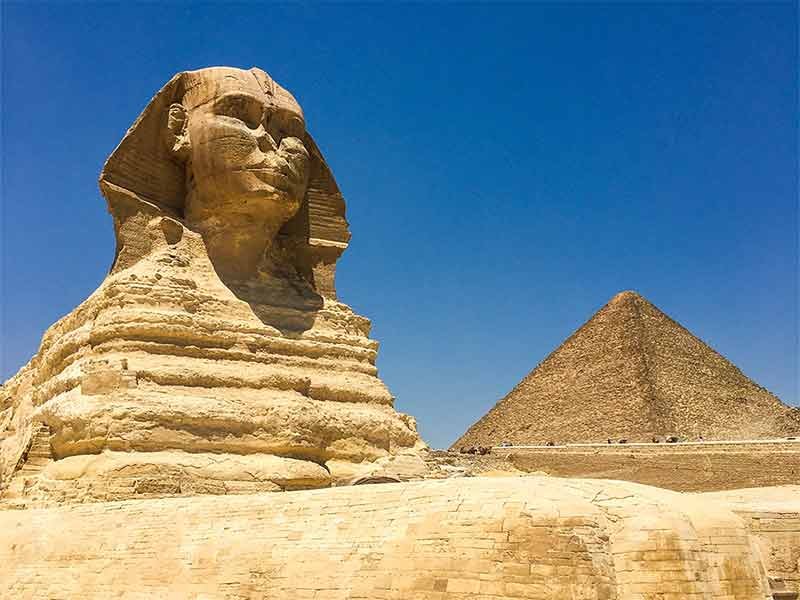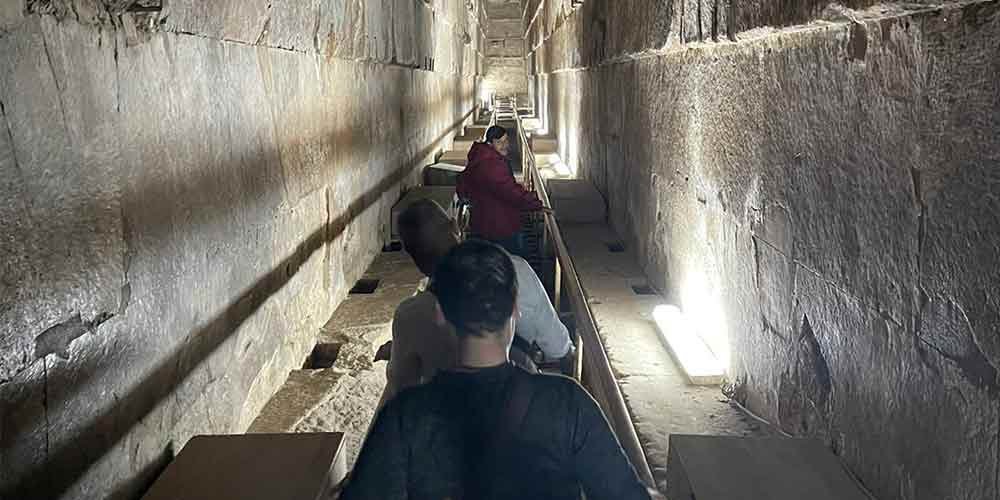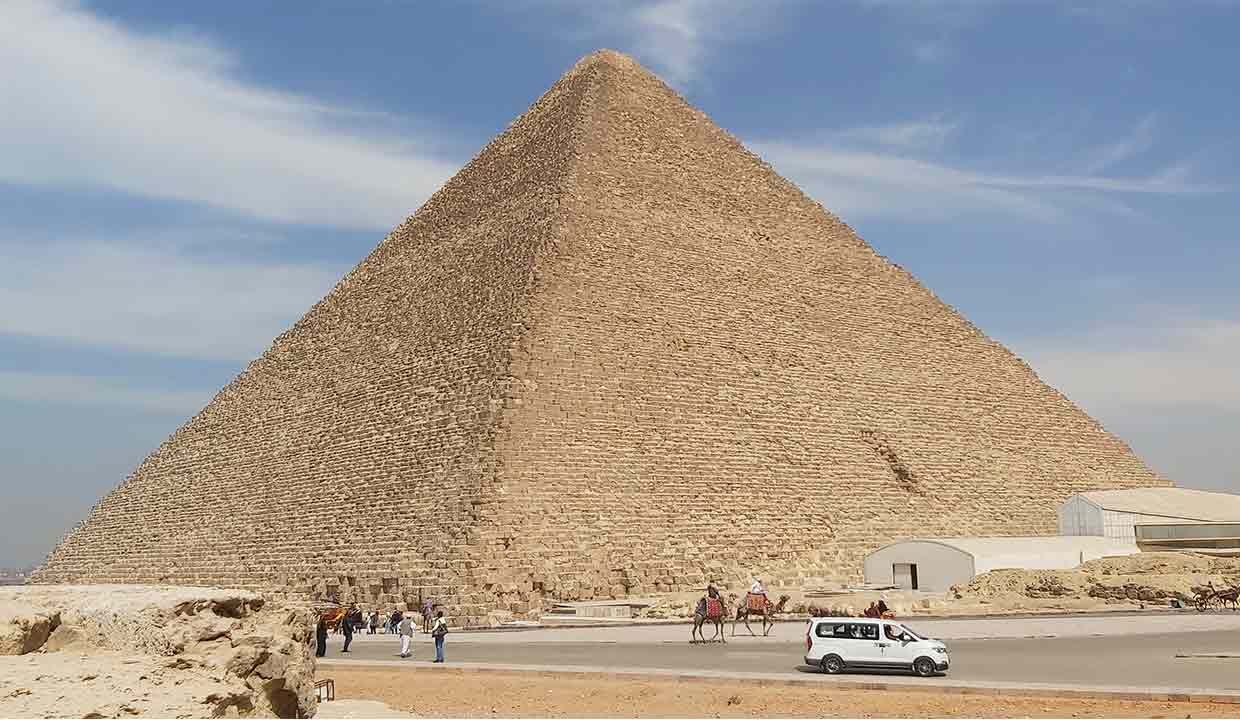Unraveling the Mysteries of Eternity: The Pyramids of Giza
In the shadows of the Egyptian desert, the Pyramids of Giza have stood as silent observers of the passage of millennia. These imposing structures are grand symbols of a civilization that continues to fascinate us with its mysteries and achievements. More than just tombs, they represent the pinnacle of ancient Egyptian architectural prowess and the profound spiritual beliefs of the time.
Origins of Grandeur
Constructed over 4,500 years ago, during Egypt’s Old Kingdom, the Giza complex comprises three main pyramids, the Great Sphinx, and several smaller structures. The pyramids were built for Pharaohs Khufu (Cheops), Khafre (Chephren), and Menkaure (Mycerinus), each intended to serve as an eternal resting place that would help the monarchs ascend to the afterlife.
The Great Pyramid of Khufu
The largest of the three, the Great Pyramid of Khufu, held the record for the world’s tallest man-made structure for over 3,800 years. Originally standing at 481 feet (146.6 meters), it has lost some of its height over time due to erosion and the removal of its casing stones, but it remains an awe-inspiring sight. With an estimated 2.3 million blocks of stone, some weighing as much as 80 tons, the construction of this mammoth structure continues to baffle historians and engineers alike.
Inside, the Great Pyramid is a network of narrow passages leading to three primary chambers: the King’s Chamber, the Queen’s Chamber, and the Subterranean Chamber. The King’s Chamber houses a red granite sarcophagus believed to have held the mummy of Khufu. The purpose of the other two chambers remains a subject of debate.
The Pyramid of Khafre
Adjacent to the Great Pyramid stands the Pyramid of Khafre, built by Khufu’s son. While slightly smaller, its elevated position on the plateau and remaining casing stones at its peak often give the illusion of it being the tallest. The Sphinx, another iconic symbol of Egypt, is part of Khafre’s pyramid complex and is believed to bear his face.
The Pyramid of Menkaure
The third pyramid, belonging to Menkaure, is significantly smaller than the other two but is no less impressive. Unique among Giza’s pyramids, Menkaure’s pyramid features a lower section encased in granite rather than the usual limestone, indicating a possible change in construction plans during its building.
The Great Sphinx
The Sphinx, with the body of a lion and the head of a human, is a monumental statue that lies on the east of the pyramid complex. It is believed to be the most massive single-stone statue globally and, despite many erosions, the enigmatic expression of the Sphinx continues to be a major source of fascination.

The Ongoing Enigma
How the pyramids were constructed using the primitive technology of the time remains a subject of speculation and debate. Several theories have been proposed, including the use of large ramps and the labor of tens of thousands of workers over several decades. Despite the many excavations and studies, the pyramids continue to hold onto their secrets, adding to their allure and mystique.
As historical monuments, the Pyramids of Giza have come to embody the essence of ancient Egypt, revealing glimpses into the grandeur of a civilization that believed not just in the mortality of life but the eternity of death. The pyramids stand as timeless sentinels in the desert, enduring as both objects of scholarly study and a source of wonder and intrigue for visitors from around the world. Their scale, precision, and sheer architectural ambition make the Pyramids of Giza an eternal symbol of human achievement.
Inside the Pyramids
Venturing inside the pyramids is an experience unlike any other. Narrow corridors, steep ascents, and tight spaces lead to the main burial chambers. Hieroglyphics, the intricate writing system of ancient Egyptians, adorn some walls, but the interiors are largely unadorned, especially compared to other Egyptian tombs. The simplicity and the silent echo inside these chambers serve as a solemn reminder of the sacred purpose these structures served.
 The Giza Plateau Today
The Giza Plateau Today
Today, the Giza Plateau is a UNESCO World Heritage Site and one of Egypt’s primary tourist attractions. The pyramids, despite centuries of pillaging and weathering, remain largely intact, their majesty undiminished. Each year, they draw millions of tourists who come to witness firsthand the architectural genius of the ancient world. In the evening, a popular sound and light show illuminates the pyramids, recounting the story of this ancient civilization.
The Solar Boat Museum
Located next to the Great Pyramid, the Solar Boat Museum showcases an ancient Egyptian ship that was discovered disassembled in a pit at the foot of the pyramid. The ship, thought to be meant for Khufu’s use in the afterlife, was painstakingly reconstructed and is now one of the oldest, largest, and best-preserved vessels from antiquity.
The Pyramids’ Place in Popular Culture
The Pyramids of Giza have firmly entrenched themselves in popular culture. They’ve become a staple in adventure literature and cinema, serving as the backdrop for countless tales of adventure, mystery, and archaeological intrigue. They’ve been featured in everything from travel posters to video games, testament to their enduring fascination.
The Pyramids of Giza are more than just ancient tombs; they’re a testament to the human spirit’s ability to create, endure, and aspire. They embody the essence of Egypt and continue to captivate and intrigue us with their magnificence and mystery. Whether you’re an archaeology enthusiast, a history buff, or a casual tourist, the Pyramids of Giza promise an experience that’s both awe-inspiring and humbling, a journey into the very heart of human civilization.


Comment (0)